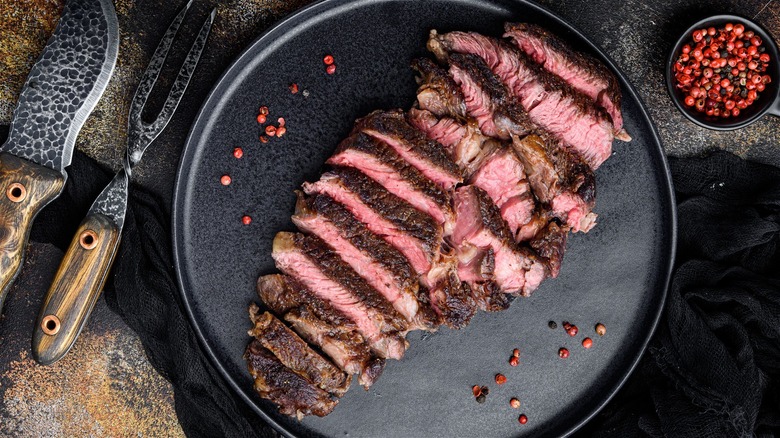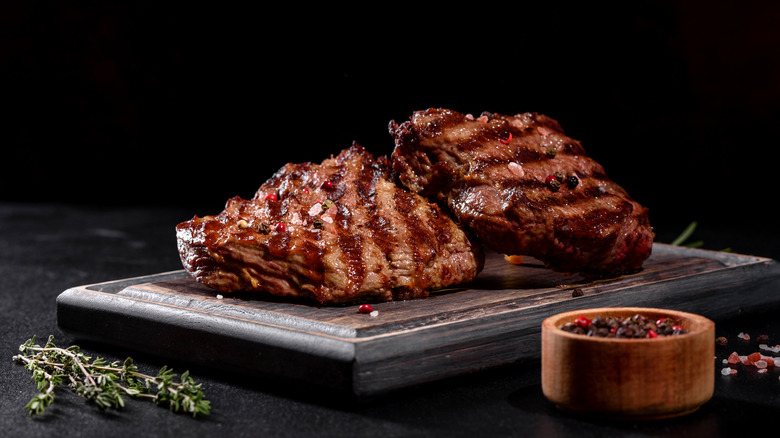What Was A Steak Dinner Like In Ancient Rome?
We all know that steak dinners aren't a new invention. It's so popular that it's one of the most-requested last meals, according to Linz Heritage Angus. The cuts of meat have been enjoyed by a variety of cultures for hundreds of years — in fact, according to the Merriam-Webster dictionary the word first appeared around the 15th century and comes from an Old Norse word "steik." Even before the word was coined, however, there are records of people eating steak dinners as far back as Ancient Rome (via Historical Italian Cooking). While we often think of Italy as a place rich in epicurean history and associate it with dishes such as pasta and pizza, the truth is that food variety and cooking techniques were well established even before the region was united to form the Kingdom of Italy in 1861. Of course, the tomato-rich cuisine that we know the country for today didn't exist in the Roman era as the fruit wasn't introduced there until the Spanish brought it back from the Americas during the 1500s. Therefore, ancient flavor profiles were quite different.
Staples to the everyday Roman diet included things such as bread, cheese, and cold cuts. However, wealthier members of society were able to host lavish dinners for family and friends, which included a more elaborate menu that included various cuts of meats in marinades, vegetables, and legumes, and was usually prepared by slaves, per Historical Italian Cooking.
This one ingredient is the difference between modern and ancient steak
Today, we tend to think of a classic steak dinner cooked with fat and salt as the bare minimum and a variety of sides that include things like mashed potatoes or green beans. While our modern idea of steak is usually a cut of beef, Historical Italian Cooking suggests it was a term for a cut of meat known as "ofellae" with no particular animal in mind. The article mentions recipes from an ancient cookbook, "De Re Coquinaria," that use various meats such as pork, beef, and mutton.
The main difference between modern marinades and Ancient Roman ones is an ingredient called garum. This product was so popular during the historical period that it was consumed with just about everything and was also a symbol of wealth because, much like caviar, demand for the product was so great that prices could set the buyer back a tidy sum. This prized ingredient that was used with steak — and just about everything else — was a blend of fermented fish and salt. Therefore the modern equivalent is a fish sauce, similar to those used in Asian cuisine, according to National Geographic.
If you'd like to give it a try, Historical Italian Cooking chose to recreate an Ancient Roman recipe for beef steak. Their sauce includes long pepper, garum, and honey and is used both during cooking and serving.

